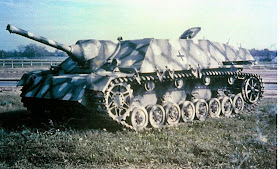Erwin Rommel as Oberbefehlshaber Panzerarmee "Afrika", wearing his tropenuniform (tropical uniform). Behind him standing Afrikakorps officer with the background of palm trees
Generalfeldmarschall Erwin Rommel (1894-1944) from "Signal" Magazine, No. 17, First Edition of September 1942. He is wearing three medals (!) in his neck: Pour le mérite (received 10 December 1917 as Oberleutnant and Kommandeur of a Kampfgruppe from württembg. Gebirgs-Bataillon), Schwerter zum Ritterkreuz des Eisernen Kreuzes mit Eichenlaub #6 (received 20 January 1942 as Generalleutnant and Oberbefehlshaber der Panzergruppe Afrika), and Italian Military Order of Savoy (received 1941)
Sources:
http://www.allposters.com/-sp/Marshal-Erwin-Rommel-1894-1944-from-Signal-Magazine-No-17-First-Edition-of-September-1942-Posters_i1343323_.htm
http://www.warcolorphotos.com/308-feldmarschall-erwin-rommel


















































